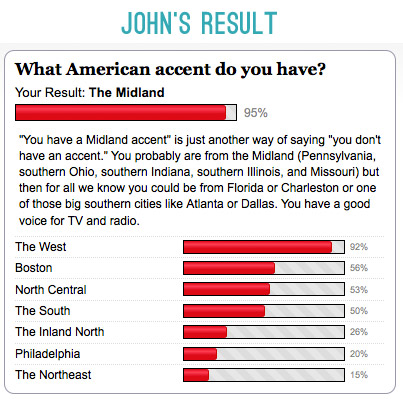
# **How Are Accents Recognized? A Recent Study Questions Existing Beliefs**
Accents often serve as indicators of a person’s origin—or at least that’s our assumption. When we encounter someone pronouncing words differently from what we perceive as “normal,” we frequently conclude they possess an accent. Yet, a recent study indicates that our approach to recognizing accents might not be as simple as just listening for variances.
Kathryn Campbell-Kibler, an associate professor of linguistics at The Ohio State University and the study’s author, asserts that cultural factors may play a more significant role in shaping our perception of accents than our actual exposure to various speech patterns.
## **The Research: Are People Able to Accurately Discern Accents?**
The research, featured in the *Journal of Sociolinguistics*, originates from a long-term project undertaken at the [Language Sciences Research Lab](https://u.osu.edu/thebln/language-pod/) located in the [Center of Science and Industry (COSI)](https://cosi.org/), a science museum in Columbus, Ohio.
In this study, 1,106 participants, mostly from Ohio and ranging from 9 years old to adulthood, engaged in an experiment aimed at assessing their accent perception. Participants listened to various recordings of speakers articulating select words that featured the same vowel sound. Given that vowel sounds are often crucial for Americans in assessing accents, examples like “pass,” “food,” and “pen” were included.
Each participant evaluated the speakers on a scale from “not at all accented” to “very accented.” Unbeknownst to them, all speakers hailed from one of three distinct regions of Ohio:
– **Northern Ohio** (with the “Inland North” accent),
– **Central Ohio** (with the “Midland” accent), and
– **Southern Ohio** (with the “South” accent).
Following the listening segment, participants were asked to separately evaluate how heavily accented they believed speech from various Ohio regions to be, on a scale from 0 (no accent) to 100 (very accented).
## **Perceptions vs. Reality: A Surprising Discrepancy**
The study revealed noteworthy differences in how Ohio residents perceive regional accents. Participants typically believed that:
– **Southern Ohioans exhibited the most pronounced accents**, scoring between 60 and 70.
– **Central Ohioans demonstrated the least distinct accents**, receiving scores around 20 to 25.
– **Northern Ohioans proved more challenging to evaluate**, obtaining a mid-range rating near 50.
However, researchers uncovered an unexpected reality—people’s general perceptions of accents did not align with their capacity to identify them in actual speech.
For instance, an individual who thought northern Ohioans had strong accents (rating them a 90 out of 100) did **not** necessarily classify an authentic northern Ohioan’s speech as heavily accented upon hearing it. This trend was consistent for other regions as well.
This indicates that individuals might not recognize accents purely through auditory perception. Rather, their anticipations about accents seem influenced more by cultural dynamics than by specific phonetic recognition.
## **How Are Accents Acquired?**
If we don’t solely identify accents by hearing them, what shapes our beliefs about which regions or groups possess distinctive accents? Campbell-Kibler provides a captivating theory: **we culturally acquire our understanding of accents instead of merely through auditory experience.**
“We don’t yet have the complete explanation for why this occurs,” she notes, yet she proposes that people may base their accent comprehension on social interactions, portrayals in media, and hearsay rather than direct contact.
For example:
– A child might hear relatives tease that their aunt from Akron “talks strangely.”
– Television shows and films depict exaggerated representations of local or national accents, reinforcing existing stereotypes.
– Peer groups can shape perceptions—if a community often discusses a particular region’s strong accent, its members may adopt that perspective.
Thus, a person may struggle to distinguish a specific accent when directly engaging with someone, yet still maintain the belief that a particular area has a notable accent due to what they’ve encountered socially.
## **The Consequences: An Intricate Cognitive Mechanism**
The study’s outcomes imply that our brains process the recognition of accents in a more intricate manner than we might presume. If individuals do not solely depend on auditory signals to identify accents, there likely exists a more profound cognitive process involved.
Campbell-Kibler elaborates, “We still have much to uncover about how accents are cognitively represented in our minds.” Future investigations may illuminate exactly how we internalize, categorize, and retrieve information regarding accents.
## **Final Thoughts**
This research introduces an intriguing new dimension to our understanding of accents, underscoring how human perception is influenced by cultural learning rather than mere sensory input. While we might think we can readily pinpoint an accent by just listening to someone speak, the reality is more complex.